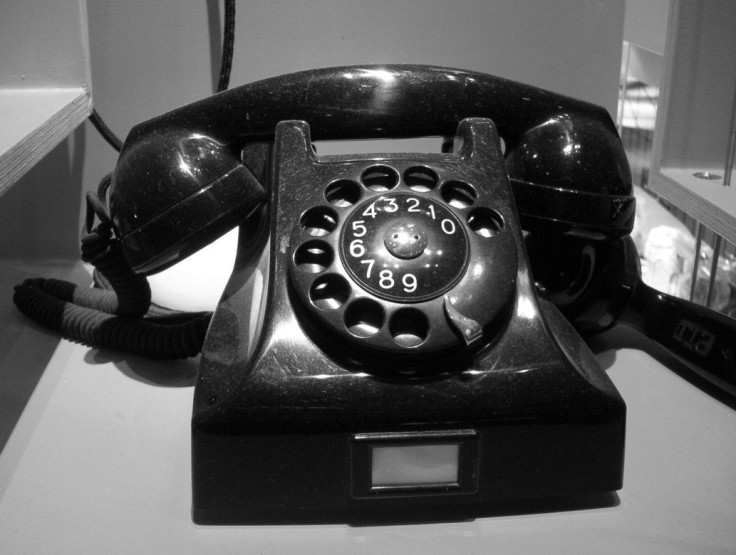Want To Drop Your Landline But Keep Cable TV? Good Luck With That

There are some good reasons to drop your wired telephone line. Namely, no one calls it except telemarketers and it costs $20 to $40 a month. But dropping a landline is harder than you might think, especially if you buy a package that includes broadband and television because cable, phone companies and other broadband providers price their “bundles” of TV, broadband and home phone to make it uneconomical to opt out.
“I tried to drop it just because I frankly wasn’t using it,” said Mike Sprouse, a Comcast home service subscriber who runs a small marketing firm in Chicago. “When I called to see about new pricing they told me it was going to cost me more to drop it from the cable bundle.”
Sprouse is still considering it even though his $145 package of cable, broadband and phone will increase $15 a month without the phone. Or, maybe he’ll just unplug the thing when the next 888 telemarketing number pops up. Either way, it seemed strange that Comcast is essentially paying him to keep a line he does not want.
“I’m considering it anyway to stop the nonstop telemarketing,” he said.
Traditional telephone lines -- both copper wire and web-based -- have been on the wane for the past decade. In 2003, only 5 percent of Americans lived in a household without a landline; today that number is heading toward 50 percent. The Centers for Disease Control, which conducts many phone-based surveys and collects what many consider to be the most granular data on phone lines, estimated in 2013 that 38 percent of American adults don’t live in a home with a landline. For children less than 18, the number is 45.5 percent.
Yet the landline persists, for a lot of reasons. It sounds better. Compared to wireless, it’s cheap. It's more resilient in some natural disasters, yet vulnerable in rural areas to heavy snow and downed trees. If you live in a tall building, a 911 call can locate your floor, whereas a mobile phone 911 call will only give geo-location.
Still, there’s one overwhelming reason American households keep the landline phone: It won’t make your overall broadband bill any cheaper. Broadband providers price their bundles to keep you roped into as many services as possible, and anyone who's tried reducing those services knows how brutish those retention tactics can be.
But the biggest strong-arm tactic is price. You'll save little, if anything by dropping a phone that's never used. Consumer Reports warned as much in a recent story “5 Reasons to Keep a Home Phone.” “About 40 percent of Consumer Reports readers who thought about switching telecom services kept the phone as part of the bundle because of the skimpy savings,” the magazine reported.
Why does cable do it? It still makes a great deal of money. Comcast’s (NASDAQ:CMCSA) voice lines, for example, accounted for $922 million in revenue in the quarter ended in June, up 4 percent from the prior year. Verizon (NYSE:VZ) lost 145,000 residential phone lines in the past quarter but still made $259 million on its home phone business, on $3.86 billion in revenue.
“The landline is still a viable part of our business whether that is copper-based or FiOS digital voice and we obviously want to encourage people to take the landline as a part of their bundle,” a Verizon spokesman said.
Unlike TV service, which has huge content costs, the phone network is built; the telcos and cable companies are just harvesting it. Having transitioned most of the U.S. away from copper lines to digital phone service, phone calls are sharing the same pipe as broadband data and TV, and they want to sell as many services through that pipe as possible.
"You hae to think about where the cost is in the business," said one cable exec. "There are not programming fees associated with the landline, the infrastructure is built." Cable makes more money from a land line than from HBO.
Then there’s Wall Street. Among the metrics that cable and telcos tell the street is the number of customers taking the “triple-play” of voice, TV and data, and ARPU, average revenue per subscriber. But they also pay attention to another metric: PSU or “primary service unit.” That’s how many services are sold individually. In the case of a “triple-play” household that would be three PSUs, which in the broadband world is much better than two.
You’re not dreaming it -- it is really hard to drop your home phone. “What we ideally want to do is keep as many customers as we can in broadband and serve with as many services as we can sell them,” said Pat Brogan, an analyst at United States Telecom Association.
© Copyright IBTimes 2024. All rights reserved.





















